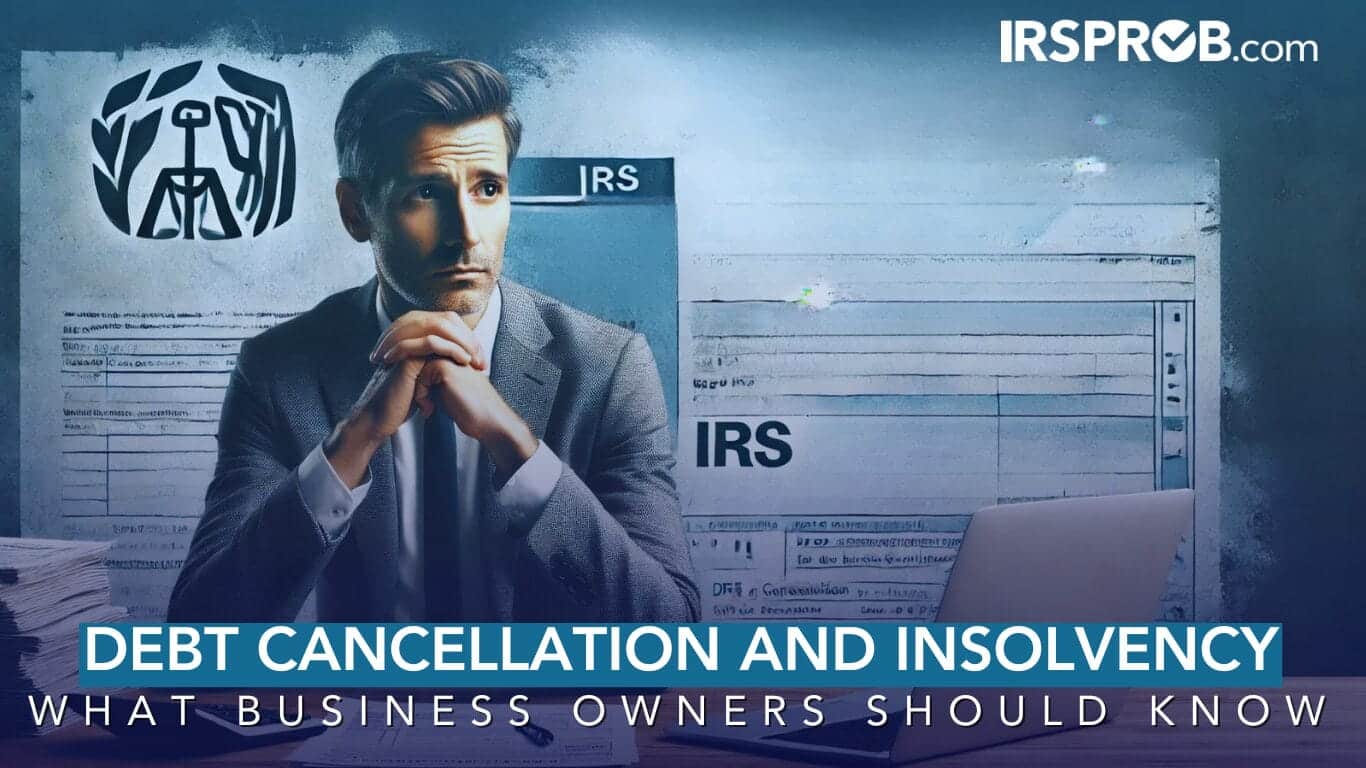
As a business owner, navigating the complexities of debt is a critical part of managing your financial health. One area that often leads to confusion is the tax treatment of cancellation of debt (COD) and how it interacts with insolvency. Let’s break it down in a way that ensures you understand how these rules work and how they can impact your business.
What is Cancellation of Debt?
When a lender forgives or cancels a debt that you owe, the IRS generally treats the amount forgiven as taxable income. This means you might be required to report the amount of cancelled debt on your tax return as ordinary income. Some common scenarios where debt cancellation occurs include:
- Credit card debt forgiveness
- Loan forgiveness after a foreclosure
- Repossession of property
For example, if a lender cancels $10,000 of your business loan, you may need to report that $10,000 as taxable income, which could lead to a higher tax bill.
Insolvency and Its Role in Reducing Your Tax Burden
Fortunately, if you’re insolvent—meaning your total liabilities exceed the fair market value (FMV) of your assets—there’s a provision that allows you to exclude the cancelled debt from taxable income. The insolvency exclusion can be a lifeline for business owners facing financial distress.
Insolvency Defined
You are considered insolvent if the total of all your liabilities is greater than the total value of your assets immediately before the debt cancellation. Assets can include your business equipment, property, vehicles, and even exempt items such as retirement accounts. Liabilities include the debt you owe, whether it’s recourse or nonrecourse, as well as any cancelled debt.
Example: How the Insolvency Exclusion Works
Let’s say your business is struggling, and a lender forgives $20,000 of debt. Before the debt cancellation, you calculate that your total liabilities were $50,000, and the FMV of your assets was $40,000. Since your liabilities exceed your assets by $10,000, you are considered insolvent to that extent. As a result, you can exclude $10,000 of the cancelled debt from income under the insolvency exclusion. However, the remaining $10,000 (from the $20,000 forgiven) would still need to be reported as taxable income.
What If You’re Only Partially Insolvent?
If the amount of cancelled debt exceeds the amount by which you’re insolvent, you only get to exclude the portion equal to your insolvency. For example, if you had $5,000 more in liabilities than assets, but your lender forgave $15,000 in debt, you could exclude $5,000, but the remaining $10,000 would need to be reported as taxable income.
Reporting Cancelled Debt: Form 1099-C
If a lender cancels $600 or more of your debt, they will issue you a Form 1099-C, which will outline the amount of cancelled debt you need to report. Even if the amount is under $600, the IRS still expects you to include it in your tax return, unless you qualify for an exclusion, like insolvency.
Using Form 982 to Report Exclusions
To properly exclude cancelled debt due to insolvency, you will need to file Form 982, Reduction of Tax Attributes Due to Discharge of Indebtedness. This form helps you reduce tax attributes such as asset basis, credits, and losses, ensuring that you don’t get an undue tax benefit from the cancellation.
Business Debt vs. Personal Debt
The IRS treats business debt differently from personal debt. For instance, if your business’s credit card debt is forgiven, and you’re insolvent, the same exclusion rules may apply. However, if you had personal credit card debt or a repossessed vehicle, the process involves calculating gains or losses from the sale of the property.
Other Considerations for Business Owners
- Foreclosure and Recourse Debt: If your business property is foreclosed, and the lender cancels recourse debt that exceeds the property’s FMV, the excess amount could be treated as taxable income. However, if you’re insolvent, you may exclude this amount to the extent of your insolvency.
- Cancellation as a Gift: If the cancelled debt is considered a gift, it’s not taxable income, but gift tax might apply depending on the situation.
Planning Ahead: Protecting Your Business from Tax Surprises
Understanding how COD and insolvency work can help you avoid unexpected tax bills during difficult financial periods. Be proactive by keeping accurate records of your business’s assets and liabilities. If you suspect you may qualify for the insolvency exclusion, contact a tax professional early on to ensure you are prepared to file the proper forms and avoid costly mistakes.
While insolvency can offer relief, it’s essential to realize that even if you avoid paying taxes on cancelled debt today, the reduction in tax attributes could affect your business in future tax years. Always plan for both the immediate and long-term consequences.
Final Thoughts
Debt cancellation and insolvency rules can significantly impact your tax situation as a business owner. With proper planning and understanding of IRS regulations, you can minimize your tax burden and avoid potential pitfalls. If you’re facing financial difficulties, consult with a tax advisor to explore all your options and ensure you’re making the best decisions for your business.
For additional guidance on managing cancelled debt or understanding the insolvency exclusion, feel free to contact us. Proper tax planning today can save your business from negative tax consequences tomorrow.







